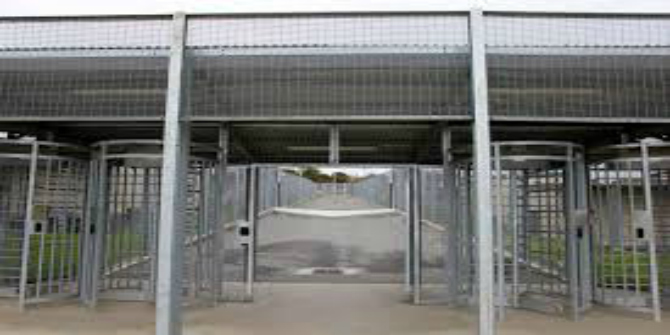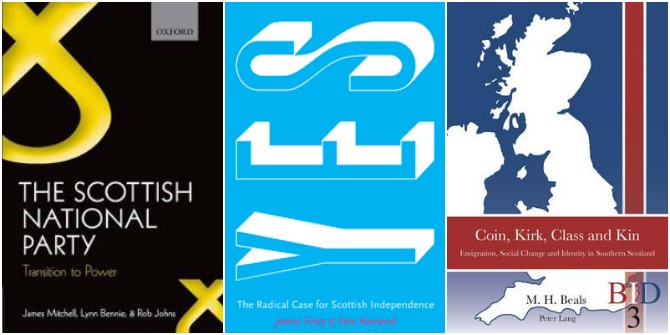The collection Immigration Detention: The Migration of a Policy and its Human Impact, edited by Amy Nethery and Stephanie J. Silverman, gives an overview of the practice and human impact of detention as an integral part of immigration management and control through a series of country case studies. While Gayle Munro would have welcomed more direct engagement with individual detainee experiences and voices, this book gives comprehensive and relevant insight into detention policies and practices at a time when Europe is grappling with how to respond to pressure on its borders.
Immigration Detention: The Migration of a Policy and its Human Impact. Amy Nethery and Stephanie J. Silverman (eds). Routledge. 2015.
 ‘If I can’t deport them, I’ll lock them up to make their lives miserable.’
‘If I can’t deport them, I’ll lock them up to make their lives miserable.’
This revealing statement, attributed to one senior government official on the ‘problem’ of immigration, is indicative of state strategies of immigration management the world over. Such an aggressive position, articulated in this instance by a former Israeli Interior Minister (156), encompasses an unspoken position on immigration in several countries – as the chapters in this edited volume demonstrate – and resonates with the British government’s stated ‘hostile environment’ policy on immigration. Indeed, a number of chapters discuss clearly how states have adopted such assertive positions on detention as part of general deterrent policies.
Contributors to Immigration Detention: The Migration of a Policy and its Human Impact are drawn from a diverse range of disciplines, and many combine legal practice or other detainee advocacy work with their academic research. One of the striking features of the different chapters in this book – several covering previously under-documented country case studies of detention regimes – is the way in which they collectively highlight the overwhelming uniformity of the harrowing and distressing conditions within immigration detention centres across continents. Nuances within those conditions are also evident, however, between the different country case studies. The narratives highlight the Orwellian condition that characterises the global detention estate: all detention centres are awful, but some are more awful than others.
Several chapters demonstrate how states are investing heavily in the effort to avoid a breach of their non-refoulement obligations by financing the construction and management of off-shore reception, assessment and holding centres. The authors also discuss how states are then able to manipulate geography and the sovereignty of the state where the centre is located to ‘opt out’ of any responsibility regarding sanitary conditions, healthcare and monitoring of any potential human rights violations onsite. Several case studies also highlight the fluidity between the prison and detention estates. Each chapter is constructed in a similar way, which aids a comparative analysis, and the ground covered for each country case study includes immigration legislation and policy, an overview of the size and nature of the detention estate and a discussion of the human impact of the practice of detention, focusing on the physical and mental health of detainees (see page 86 for some particularly interesting statistics on mental health). The situation of unaccompanied minors and other vulnerable detainees is also examined in each case study. Alternatives to detention are additionally touched upon, although some of the contributors have covered that ground in other publications.
 Image Credit: Yongah Hill Immigration Detention Centre (Wikipedia Public Domain)
Image Credit: Yongah Hill Immigration Detention Centre (Wikipedia Public Domain)
However, what is missing from the narrative as a whole is the voice of detainees themselves. Amy Nethery and Stephanie J. Silverman state in their introduction that one of their aims through the study is to provide a ‘catalogue of the human impact’ of detention policies. One more effective way of achieving this would have been to dedicate more space within the narrative to a discussion of the individual detainee experience. Some of the chapters read like policy summaries of the state perspective followed by a literature review of the work of NGOs on the conditions within detention and the support needs of detainees. There are some exceptions within the volume: Janet Cleveland’s chapter on detention in Canada and Nicolas Fischer’s discussion of the context in France both draw on their own empirical work within the centres they refer to. In her chapter on Australia, Robyn Sampson also articulates the direct voices of detainees within her narrative, cited from her previous work.
Fischer’s ethnographic work within a French detention centre and, in particular, on efforts by the authorities to prevent detainee self-harm by withholding information about upcoming deportations, raises some interesting questions around state control versus detainee agency over their own bodies. Such questions dovetail with other debates, detailed periodically in the media, around the practice of force-feeding those who have decided to hunger strike within detention.
Those chapters that deal with detention regimes on the fringes of Europe and the Schengen borders – namely, Galina Cornelisse on The Netherlands, Ċetta Mainwaring on Malta and Cyprus and Esra Kayatz on Turkey – make for particularly interesting reading in the context of the migration crises of 2015, especially in the way that such discussions highlight how EU investment in the detention regimes of strategic border states can help to bolster ‘fortress Europe’ or, as is increasingly the case, ‘fortress Schengen’. Mainwaring’s case study in particular emphasises how the detention policies of states deemed to be ‘vulnerable’ to large-scale irregular migration by virtue of their geopolitical locations maximise the ‘crisis narrative’ as a means of encouraging further EU financial investment (55). It will be particularly interesting to follow how such a dynamic plays out as the EU grapples with responding to pressure on its borders and to witness how/whether the narrative of ‘crisis’ is portrayed by European governments in terms of the human crisis and the plight of those seeking refuge or as a crisis of immigration control.
The world of immigration legislation and policy is a fast-moving and complex (some would argue deliberately so) field of study, and the events of 2015 have shown how rapidly the status quo can change as those circumstances that prompt people to move in search of refuge reach a zenith point of tolerability. The contributions to this volume demonstrate, however, how previously under-studied detention regimes, along with those well-documented in the literature, have consistently been developed as an integral part of immigration management and control. The question of extra-territorial detention centres, highlighted in the volume, will be particularly interesting to document in the near future. Further evidence on whether detention can act as an antithesis to a ‘pull’, or as a ‘push away’, factor (5) would be welcome. However, Immigration Detention: The Migration of a Policy and its Human Impact offers a comprehensive overview of the detention policies of a number of states across several continents, and is recommended as a holistic and well-structured insight into the global detention estate for those who have an interest in the policies and politics of immigration control.
Gayle Munro holds a PhD on the experiences of migrants from the former Yugoslavia to Britain from University College London (Geography, 2015); an MA in Politics, Security and Integration from the School of Slavonic and East European Studies, UCL (2002); and a BA Honours in French and Music from Royal Holloway, University of London (1998). Gayle is currently Research Manager at The Salvation Army. Gayle is writing in a personal capacity and the review does not represent the views of The Salvation Army as an organisation.
Note: This review gives the views of the author, and not the position of the LSE Review of Books blog, or of the London School of Economics.








1 Comments